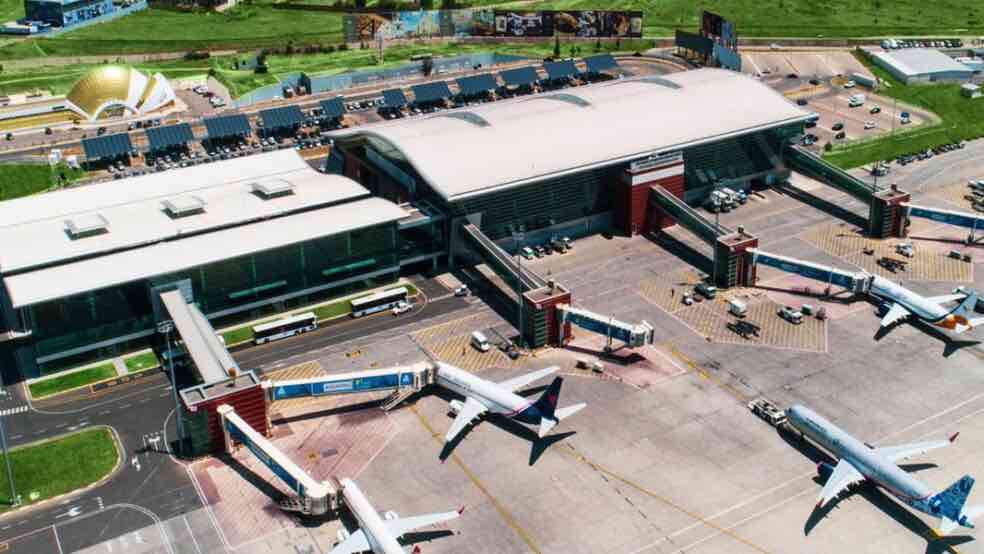By The FINANCIAL
Copyright finchannel

General aviation plays a critical role in the development of a country’s transport system, economy, and educational opportunities. In Georgia, with its strategic location at the crossroads of Europe and Asia, this sector has great potential. However, despite the clear advantages, general aviation in Georgia remains underdeveloped.
By Artem Kuzmenko, General Director of Blue Sky Academy
In this article, I will analyze the current challenges, highlight potential solutions, and explain why Georgia can become a hub for aviation training and regional connectivity.
The Global Context: Pilot Shortage
According to Boeing’s 2023 Pilot and Technician Outlook, the world will need more than 600,000 new pilots by 2040. The demand is driven by the rapid growth of civil aviation, fleet expansion, and the retirement of experienced pilots. Europe alone will require more than 100,000 new pilots in the next 15 years.
This global shortage creates both a challenge and an opportunity. Countries that can build training infrastructure and attract students will gain a strategic advantage. For Georgia, with its relatively low costs, favorable climate, and international accessibility, the pilot shortage presents a unique opportunity to develop as a regional center for aviation education.
The State of General Aviation in Georgia
Despite Georgia’s progress in commercial aviation, the general aviation sector remains limited. There are only a few small airfields suitable for private and training flights. Most of them require modernization: paved runways, lighting systems, hangars, and fuel infrastructure are either missing or insufficient.
Another barrier is the lack of training capacity. Although Georgian unive rsities prepare aviation engineers and airline professionals, the country has only limited facilities for pilot training that meet European standards. Many students from Georgia and neighboring countries must go abroad — to the Czech Republic, Poland, or the Baltic states — to obtain their licenses.
This means that Georgia loses not only human capital but also significant revenue that could stay in the country.
Key Challenges
Infrastructure Deficit
Few airfields meet international safety standards.
Lack of modern hangars, classrooms, and simulators.
Insufficient availability of certified aviation fuel (Avgas 100LL).
Regulatory and Institutional Gaps
The Civil Aviation Agency has made progress, but additional steps are needed to align procedures fully with EASA standards.
Bureaucratic delays sometimes discourage private investors.
Limited Awareness and Popularity
General aviation is still a new concept for many Georgians.
Without targeted educational campaigns, young people rarely consider pilot training as a career.
Opportunities for Growth
Despite the challenges, Georgia has unique strengths:
Strategic Location: Positioned between Europe, the Middle East, and Central Asia.
Cost Advantage: Training and operations are significantly cheaper than in Western Europe.
Climate: Favorable weather conditions allow year-round flight training.
Tourism and Business Growth: Expanding tourism industry creates additional demand for charter flights, air taxi services, and sightseeing flights.
These factors make Georgia an attractive destination for international students, especially from the CIS region, who are looking for affordable and high-quality training.
Solutions and Recommendations
Infrastructure Investment
Modernizing existing airfields such as Natakhtari and Kutaisi, Poti. Building new facilities in western Georgia (e.g., Poti, Batumi).
Establishing a reliable fuel supply chain.
Public-Private Partnerships
Government incentives for private investors in training centers and aircraft acquisition.
Cooperation with European ATOs (Approved Training Organizations) to bring best practices to Georgia.
Educational Development
Launching joint programs with local universities.
Promoting aviation careers among high school students.
Offering bilingual (English and Russian) courses to attract regional students.
Integration into the Global Market
Aligning fully with EASA standards to ensure that licenses issued in Georgia are recognized across Europe.
Marketing Georgia as a competitive alternative to training in the EU.
Case Example: Flight Training as a Driver of Growth
Recent initiatives show the impact of even small-scale investments. By adding just two training aircraft and modernizing classrooms, a school in Georgia can prepare up to 40–50 private pilot students annually. If scaled nationwide, Georgia could train hundreds of new pilots each year, keeping tuition revenue within the country and attracting foreign students.
This would not only address the global pilot shortage but also stimulate the local economy: creating jobs for instructors, technicians, and support staff, while boosting related sectors such as tourism, housing, and fuel supply.
Why It Matters
General aviation is not just about flying small planes. It is about building a complete ecosystem: education, safety, technology, and international cooperation. By investing in this sector, Georgia can:
Retain its young talent.
Attract international students.
Strengthen its economic independence.
Position itself as a regional leader in aviation.
The experience of countries such as the Czech Republic and Lithuania shows that developing general aviation can transform a small state into a recognized aviation hub. There is no reason why Georgia cannot follow the same path.
The global pilot shortage is a challenge, but for Georgia it is also an opportunity. By addressing infrastructure gaps, encouraging private investment, and aligning with international standards, Georgia can unlock the potential of general aviation.
This transformation will not only prepare a new generation of pilots but also contribute to the broader economic and social development of the country. General aviation is more than a niche sector — it is a strategic industry that can define Georgia’s role in the global aviation market for decades to come.



